Background
During winter break, I had the opportunity to visit Bali with my family. Being someone of Indian descent, I have visited India and other countries in Southeast Asia before. However, the traditional Balinese architecture that I witnessed on this trip amazed me for numerous reasons. Although I could discern influence from Indian, Thai, and other building styles, the architecture in Bali left an impression.
Introduction
Bali is an island located in the southeastern region of Indonesia, a country structured as a vast archipelago. The island of Bali has some important distinguishing features such as being majority Hindu-Buddhist in religion. The rest of Indonesia is mainly Muslim and Christian. Due to this, most of Bali’s religious buildings depict some relationship to Hinduism and Buddhism. The local culture is a special blend of indigenous and more Polynesian styles mixed with external influences from India, China, and Europe.
As a region in the tropics, the nature and overall biodiversity in Bali is amazing. Most areas are lush, green, and filled with banana trees, coconut trees, palm trees, bamboo trees, and rice fields. This magnificent environment also plays a role in the architecture when it comes to building materials and craftsmanship.
Roofs
While on my vacation, I started to notice common trends in the traditional Balinese houses, temples, and other buildings. One of the most interesting features to me was the roofs. They are normally made in a thatched manner, using dried palm leaves or grass to form a thick layer that is resistant to rainfall. Almost all of the buildings I was in had this type of roof.
Large thatched roof interior
Carvings and Statues
Another aspect of Balinese architecture that I observed was the intricate carvings on almost all supporting beams or roof members. Many of these appeared to be done by hand and occasionally depict local natural elements such as plants, flowers, or trees.
In more religious establishments, these carvings were also present. However, most of the religious buildings or statues were constructed out of stone. Sometimes, the carvings were made to depict mythological events such as the Ramayana, a Hindu epic. Additionally, the statues portrayed demons, warriors, gods, and other religious/mythological figures with exaggerated expressions in action poses. Locals mentioned that some of these statues were constructed and placed at the boundaries of temples in order to ward off evil spirits.
Floral wood carvings in the Le Mayeur Museum
Stone gate and intricate wood carvings on the roof support (top left in gold), Ubud Palace
Guardian statue outside Ubud Palace
Structural Design
Most of the houses and temples used square wooden beams to support the thatched roofs and form a structure. In more public places such as restaurants, bamboo was used as the primary construction material. I was amazed at the way the bamboo was bent in some cases to support large roofs, almost replicating a tree with branches and a canopy.
Bamboo structure with bent elements at Omma Dayclub
Building Layout
Most of the buildings that I interacted with had an extremely open layout, with a lack of internal or even external walls. With such a hot and humid climate, some structures harnessed the power of natural ventilation. This open layout also felt like it welcomed nature in rather than shutting it out. Along with the use of natural building materials, Balinese architecture strives to harmonize with nature.
Bamboo structure with thatched roof and an open layout at Lotus Cafe
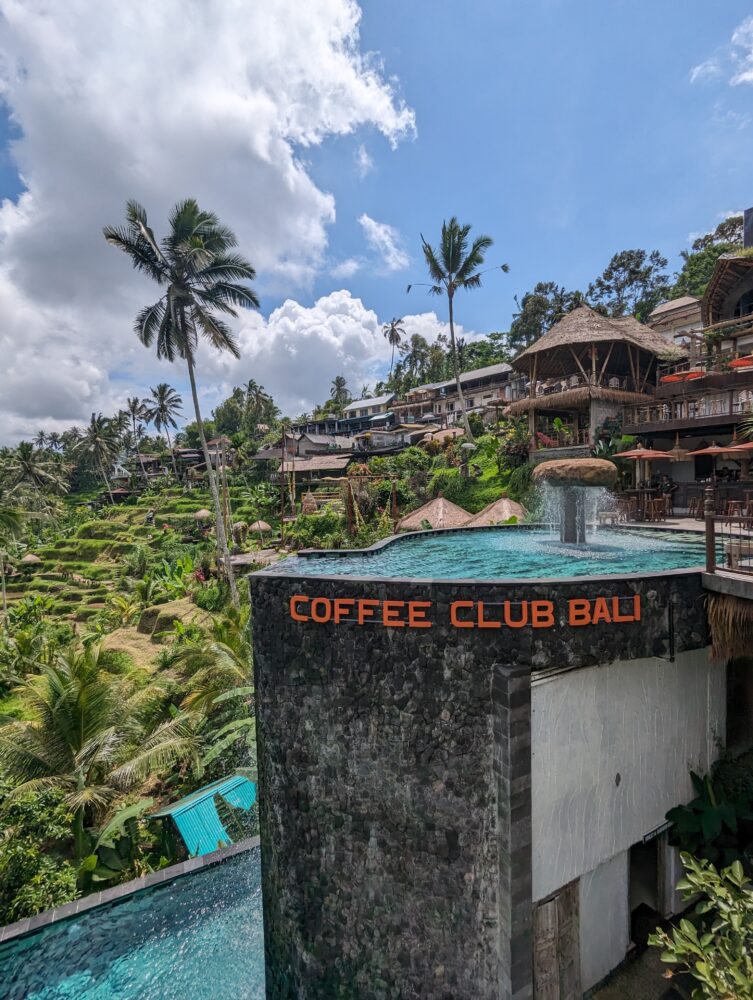
Coffee Club Bali and surrounding buildings with thatched roofs, open layouts, bamboo construction
Citations:
- All images taken by me


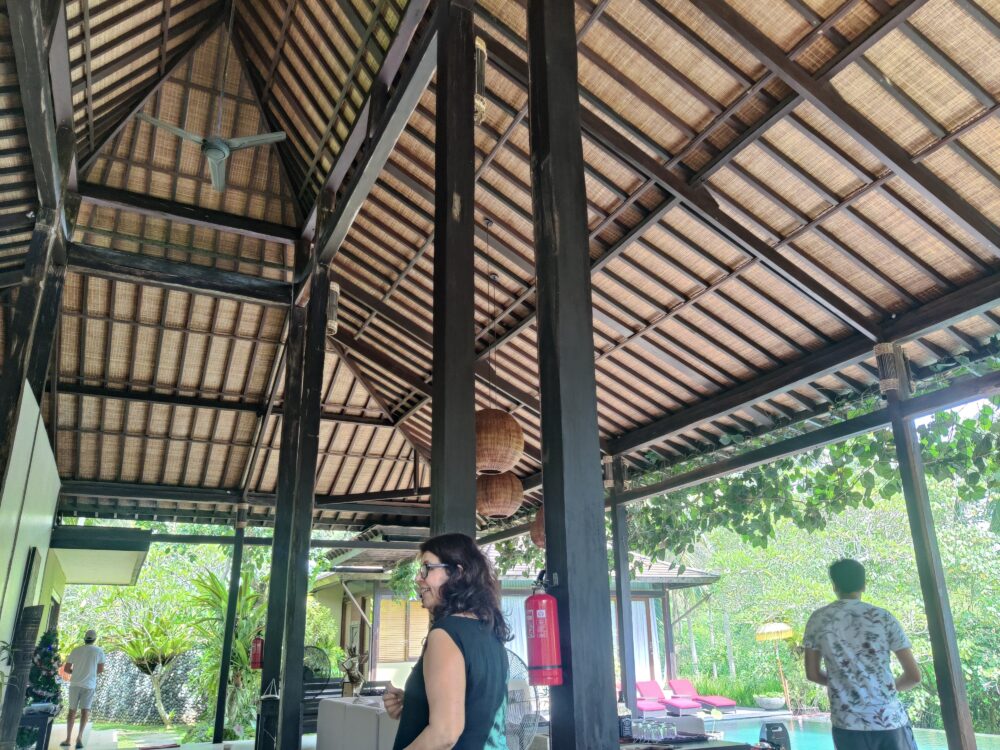

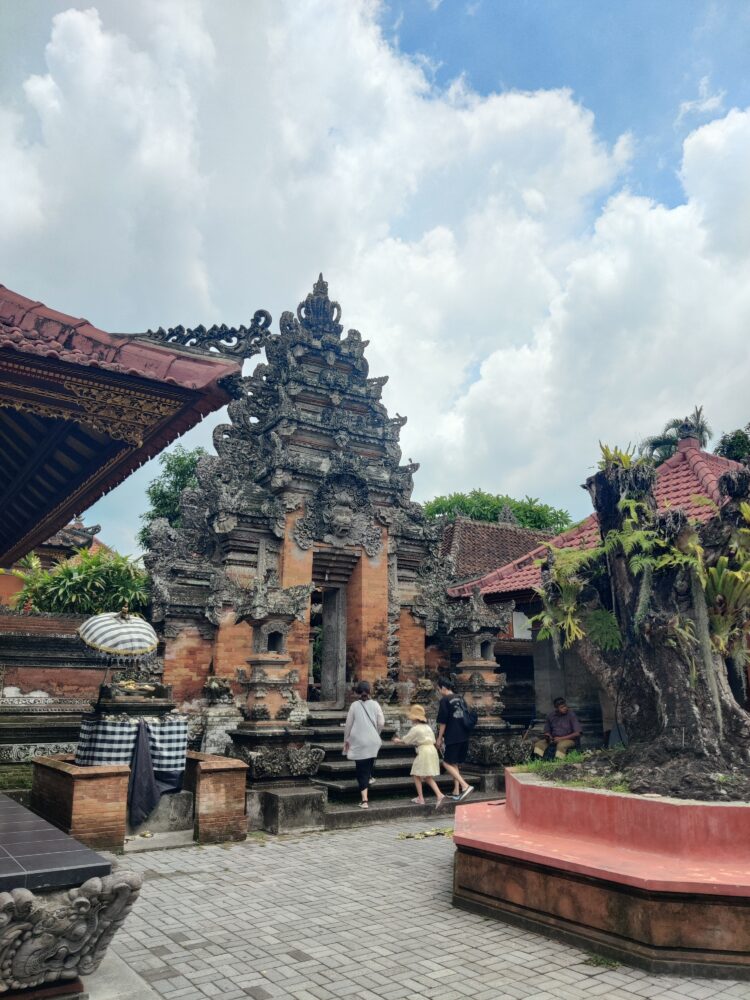
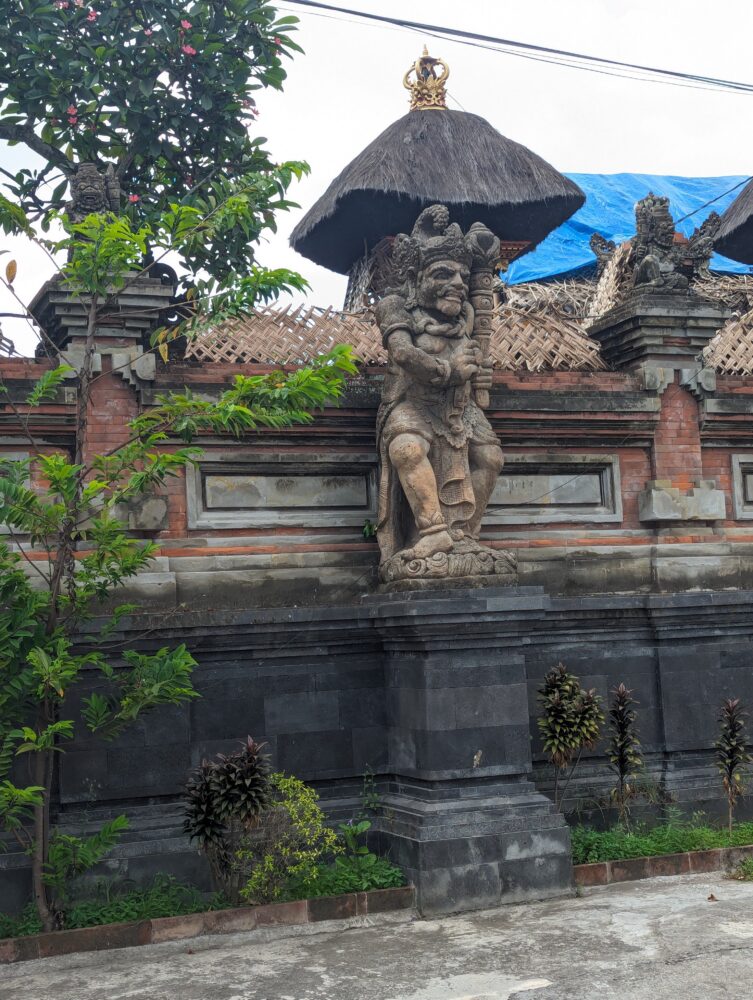
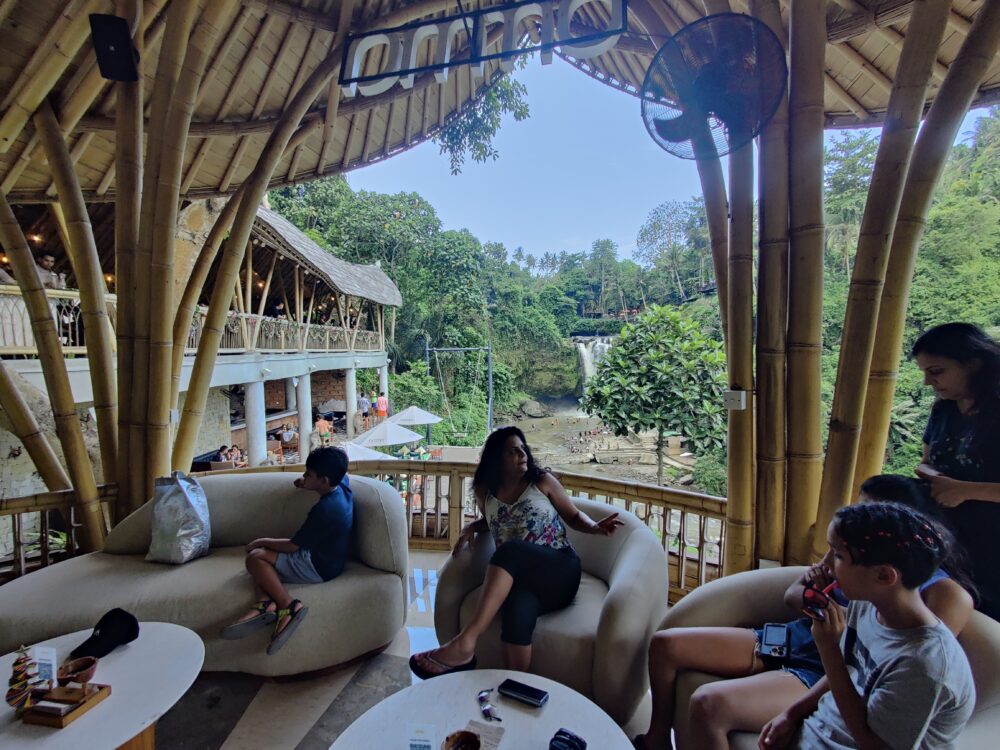
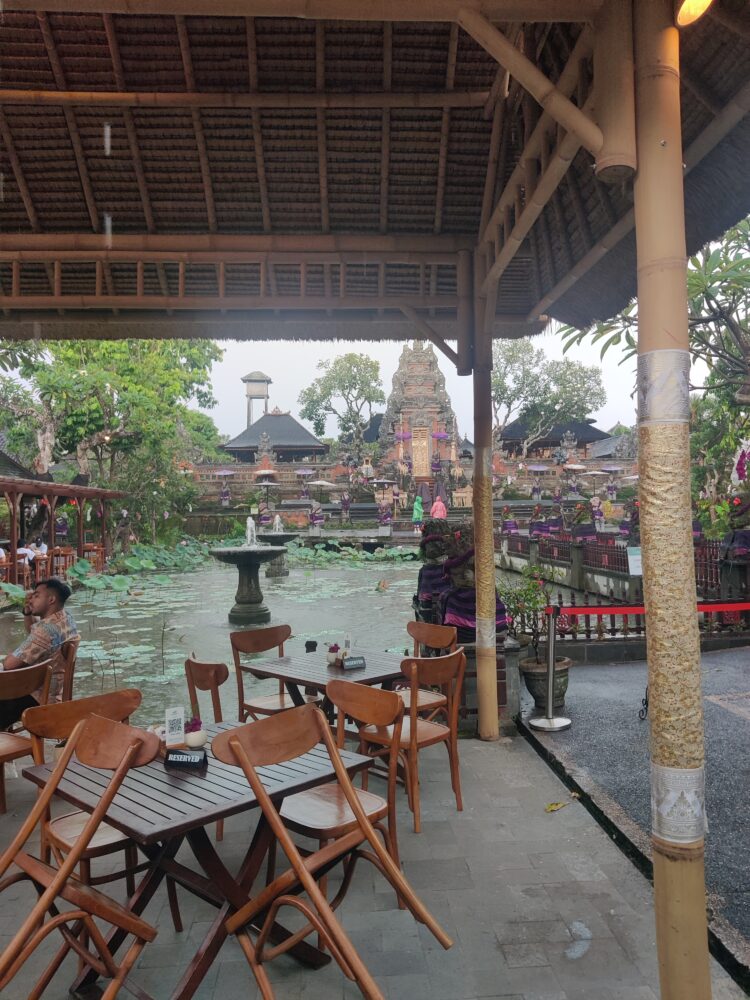
6 Comments. Leave new
Does that mean al ot of what one sees in Bali today originated from the Adaman Sea region from the influence of India, Buddhism, Chinese &Thai ?
Does that mean al ot of what one sees in Bali today originated from the Adaman Sea region from the influence of India, Buddhism, Chinese &Thai ?
[…] The Ubud Palace is a stunning example of balinese architecture. It shows Bali’s rich cultural heritage. The palace’s design mixes many cultures, showing Bali’s diverse history. Thatched roofs made of dried palm leaves or grass are common. They have intricate carvings of plants and flowers8. […]
[…] temples show the region’s spiritual traditions. They mix Balinese, Hindu, and Buddhist styles5. You’ll see thatched roofs and hand-carved […]
Learning about Balinese architecture from you post was really interesting! I enjoyed seeing the pictures you took on your trip and I liked seeing all the natural elements in this architectural style. The bamboo holding up the roof of the buildings was especially cool to see due to it looking so much like a real tree inside of the building. I was wondering how this architecture differs from the rest of Indonesia, since you mentioned Bali’s population being more Hindu-Buddhist and the rest of Indonesia’s population being more Muslim and Christian.
Kyra – glad you found my post interesting. While on the trip, I did also visit Jakarta (the capital city of Indonesia). The architecture that I saw there was more colonial, with some European influences. The materials used were mainly concrete and less of the natural materials seen in Bali.